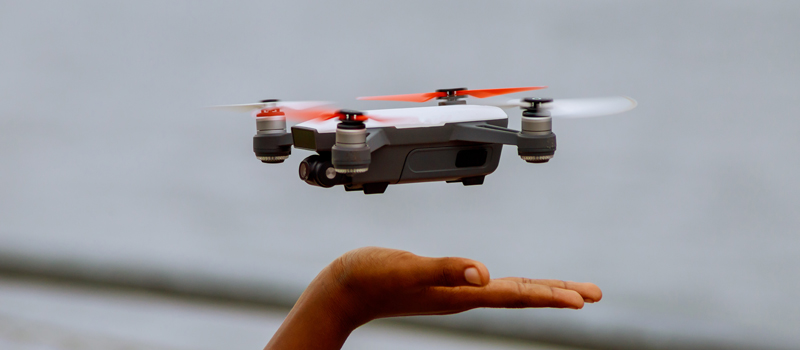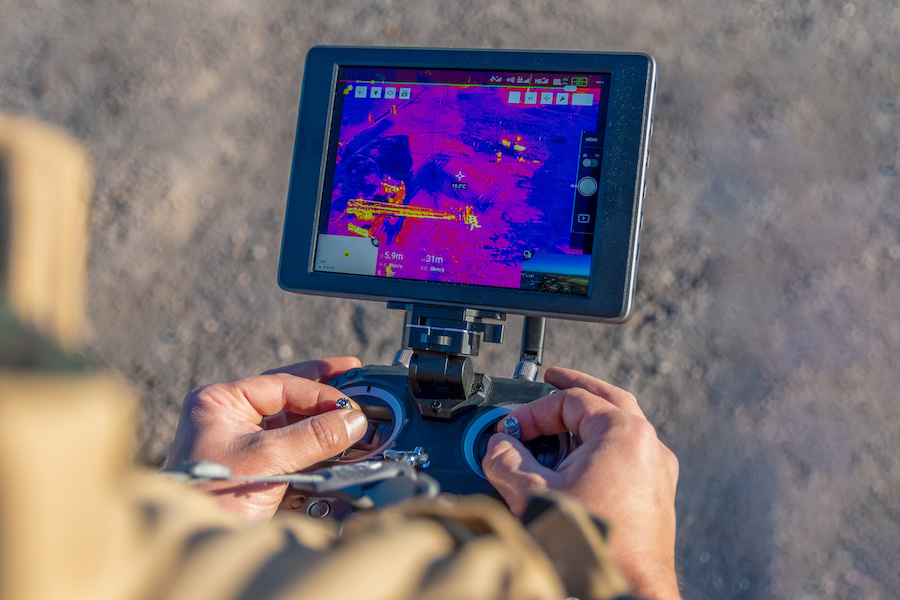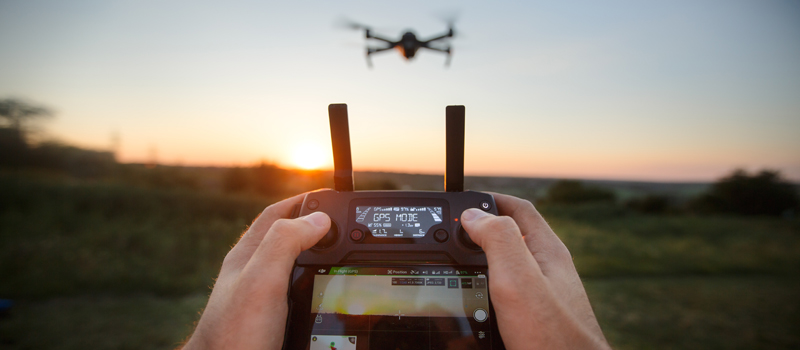-
The commercial drone industry continues to grow
-
Military drone usage expected to continue globally
-
Consumer drones on the rise
-
Counter-drone technology will be more seriously considered
-
A few future trends to watch out for
- Innovation will focus on drone automation
- Drone insurance will be more common
- New drones will be more compliant with regulations
-
Final thoughts
The growth of the market for drones is happening on two fronts. On one hand, you have the consumer drones that continue to gain mainstream appeal because of how much more convenient and less expensive drones have become in the last few years. On the other hand, you have the commercial market with more and more businesses realizing how drones could work for them.
As we enter 2021, how is the market for drones looking? Are will optimistic about its growth or do experts expect it to taper off soon? What can potential buyers look forward to?
The commercial drone industry continues to grow
The future certainly seems bright for the drone industry, helped in huge part by a thriving commercial market. From a market size of $4.4 billion in 2018, the commercial drone market is expected to grow to about $63.6 billion by 2025. Other experts estimate the 2025 value to be as high as $82 billion, at the same time generating more than 100,000 jobs. This is assuming a CAGR of 32%. By the end of 2021, research indicates that global drone shipments will reach 29 million units.
By 2025, the commercial drone market is expected to reach a value of $13.6 billion in the United States alone.
For now, the companies that use drones are mostly found in North America, Europe, and Asia. In the coming years, North America is expected to remain the leader in terms of market size. However, growth is expected from the Asia Pacific region, especially in Japan and China where automated drones are being adopted to offset the rising costs of human labor. The European market will continue to grow at a steady clip.
What are the primary movers that will drive this growth? Industry experts believe that there will be a higher demand for UAV-driven mapping work and for hazardous tasks, such as pipeline and power line inspection. Many of the companies are those from industrial conglomerates, IT consulting, and major defense contractors.
For years, delivery via drones had been looked at as one of the ultimate goals for commercial drone use. While there are still technical and legislative concerns that are yet to be addressed, large retail companies and technology giants continue to be invested in the idea. Not only can this application fast-track the supply chain for retail goods, but it can also allow for rapid delivery of emergency supplies, medicine, and temperature-sensitive goods. For the next coming years, the development of drone delivery may become a driving force in the growth of the commercial drone market.
Although the market for commercial drones right now is dominated by a few major brands, experts expect emerging startups to be more actively engaged in product development. The major names in the commercial drone market include Parrot, DJI, Draganfly, Northrop Grumman, Aerovironment, 3D Robotics, PrecisionHawk, Lockheed Martin, and Yuneec, among several others.
Improvement in technology is seen as another critical element in driving the growth of the commercial drone market. The demand for more sophisticated sensors and higher resolution cameras has incentivized drone manufacturers to adopt more advanced product portfolios. It has also paved the way for drone manufacturers to collaborate with major names in cameras and sensors. Nowadays, it is no longer uncommon for drones to be co-developed with brands like FLIR and GoPro.
Military drone usage expected to continue globally
Despite a growing demand for drones by private companies and businesses, civil defense remains the largest market for drone technology in the foreseeable future. Considered the most mature drone market, this trend harkens back to the origins of drones as cheaper and safer tools for military surveillance.
From 2016 to 2020, the demand for drones by various military units around the world reached a value of $70 billion. There is a huge disparity between this value and the $17 billion demand from the consumer market and the $13 billion worth of drones used commercially. On a per-year basis, the demand for drones by the military is expected to reach $21.76 billion by 2026 at a CAGR of 12.4% from the 2018 value of $7.93 billion.
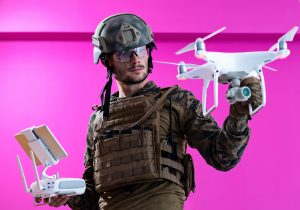
The growth of military demand is driven in large part by increasing border security issues and transnational security threats. For instance, China has earmarked a $177-billion budget for improving combat capabilities for their armed forces. It is almost a certainty that a portion of that budget will go towards unmanned flight to enhance the country’s defense sector.
The US military remains the largest market for this industry but countries like the UK, Russia, China, and Australia have been huge contributors in increasing the global military spending on drones. Other countries like Japan, India, China, and South Korea have also been ramping up the military drone demand.
To serve the growing demand, several small to big enterprises have entered agreements with countries looking to shore up their military defense and surveillance capabilities. In August 2019, AeroVironment entered into a $45-million contract for the hand-launched RQ-11B Raven small UAS, which is now already one of the most widely utilized drones by the US Army. The Raven drone was developed by California-based AeroVironment through a collaboration with the government of India.
In stark contrast is the US Navy that signed a $251.5-million contract with Northrop Grumman for their MQ-4C Triton drones. Instead of being stealthy drones, the Triton drones are designed for high-altitude, long-endurance flights for more extensive surveillance.
Companies like Lockheed Martin, General Atomics, BAE Systems, Textron Inc., and Aeronautics have also been making big waves in the military drone market.
These different approaches to drone use highlight how advances in technology have made drones even more valuable for national and civil defense today than they ever were. Drones with more flexible payload options, advanced sensors, stealthier form factors, and automated features have now widened the gap between manned and unmanned flight.
Consumer drones on the rise
Despite growing public concerns over the widespread use of drones, the consumer drone market continues to grow. In 2014, shipments for the global consumer drone market reached only 450,000 units. This grew exponentially by 2015 to 2 million units. However, this value was still dwarfed by other high-end consumer electronics including tablets (218 million units), action cameras (11 million units), and video game consoles (34 million units).
By the end of 2021, experts estimate sales of drones in the US consumer market alone to top $12 billion. The FAA’s requirements for registration have also proven to be an excellent tool for record-keeping. As of the end of 2019, there have been 1.32 million drones registered in the US for recreational use.
On a global scale, more than 7.8 million units of consumer drones are expected to ship by the end of 2021. This corresponds to a value of up to $19.25 billion. Compared to the 2016 market value of $5.44 billion, that represents an exceptional CAGR of 28.7%. A huge part of these sales will come from personal-use drones used primarily for photography and filmmaking.
Counter-drone technology will be more seriously considered
Along with the proliferation of drone use, there are increased chances of drones being used for smuggling, illegally surveillance, blackmail, or to disrupt airport operations. This battle will be waged on two fronts – legally and technologically.
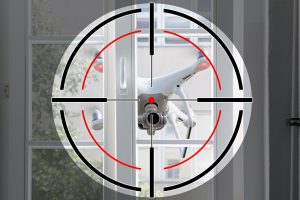
On the legal front, laws regulating the use of counter-drone technology continue to be reviewed and created from the city to the federal levels. There is no shortage of researchers working on the issue, as well as for lobbyists calling for control on drone use.
While lots of potential counter-drone devices have been developed through the years, we see future efforts trend towards minimizing collateral damage. This means using non-kinetic means, instead attempting to disable or override the controls of a malicious drone.
This will then have to be integrated into a sophisticated detection system, preventing the destructive or disruptive use of drones before they can even carry out their plans. The new Remote ID requirement should help towards achieving this goal when it becomes a definitive requirement for all drones operated in US national airspace.
A few future trends to watch out for
Innovation will focus on drone automation
As the use of drones increases in scale, it no longer becomes practical for pilots and drones to maintain a 1:1 ratio. Today’s users and the general public have also become more cognizant of the hazards of reckless drone flight. With these in mind, we can expect future drones to have better automation and “smart” features.
We can already see the beginnings of drone automation right now in drones that have “sense and avoid” systems and those with automatic subject tracking features. The ultimate goal for this technology is to develop drones that can make decisions by themselves – a form of autonomy. This would make it possible to deploy a swarm of drones to conduct highly specialized work with minimal intervention from a human operator.
Drone insurance will be more common
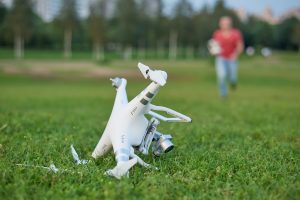
With the growth of the commercial use of drones, it’s almost inevitable for the drone insurance industry to grow along with it. After all, businesses and corporations will always be risk-averse entities. To reconcile this mentality with the innately risky nature of drone flight, there needs to be a mechanism to minimize the effects of such risks.
With this increased awareness of the risks of drone flight, we expect insurance to be a standard for most commercial drone operators. We also expect insurance products to diversity to support the needs of the drone industry. The success of “on-demand” insurance policies for drone pilots may mean that it is the optimal model.
New drones will be more compliant with regulations
Being an immature industry, the regulations on commercial drone operations similarly seems to be in a constant state of evolution. This has proven to be a challenge for drone manufacturers, as they need to ensure that their products can keep up with policy changes.
Moving forward, compliance will likely become an important factor in the design of future drones. Right now, we already have drones with built-in geofencing features and ADS-B receivers, controversial they might be.
As the recently announced Remote ID attests to, the FAA is well on the way to establishing a true system for managing unmanned aerial traffic. This is a future that drone manufacturers are likely already preparing for.
Final thoughts
2020 was certainly a big year for the drone industry, with landmark legislation being passed and several new drones that pushed the boundaries of current technology. We expect 2021 to carry on this momentum and continue to see huge strides made by the commercial drone market and its community.
While the military remains a staple user of drones, there is certainly still a lot of room for growth for the commercial drone market. Despite drones already being popular, more and more companies are only starting to see how drones can be useful for their businesses. This increased demand for drones will further push the development of newer technologies, particularly in the field of automation and compliance with regulations.
